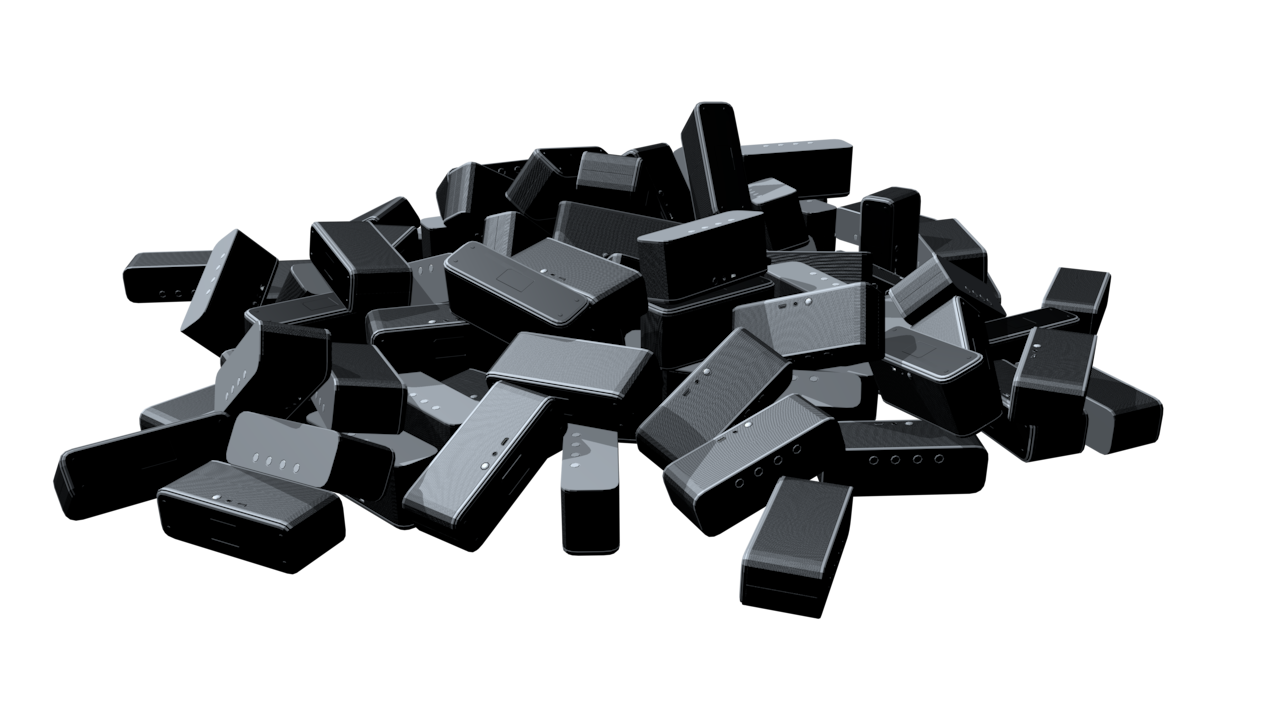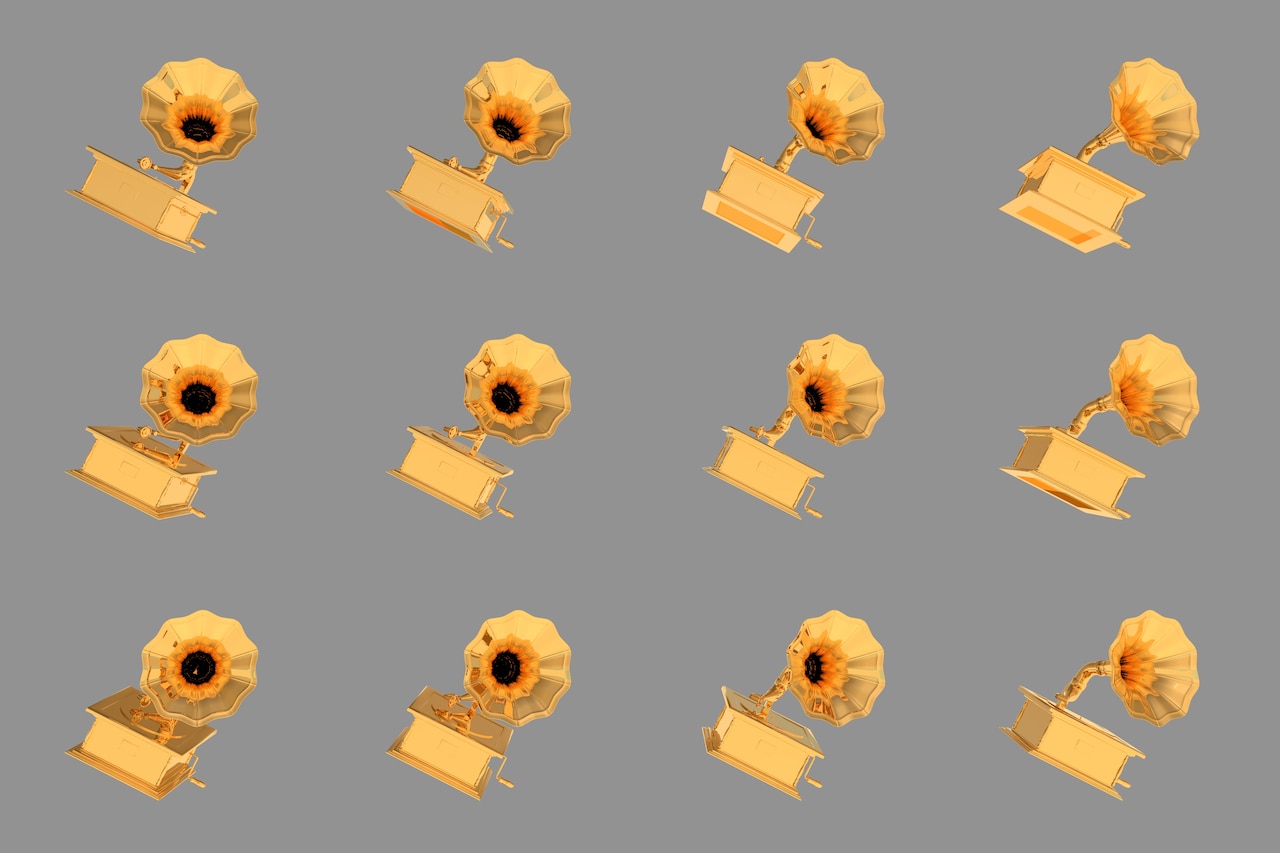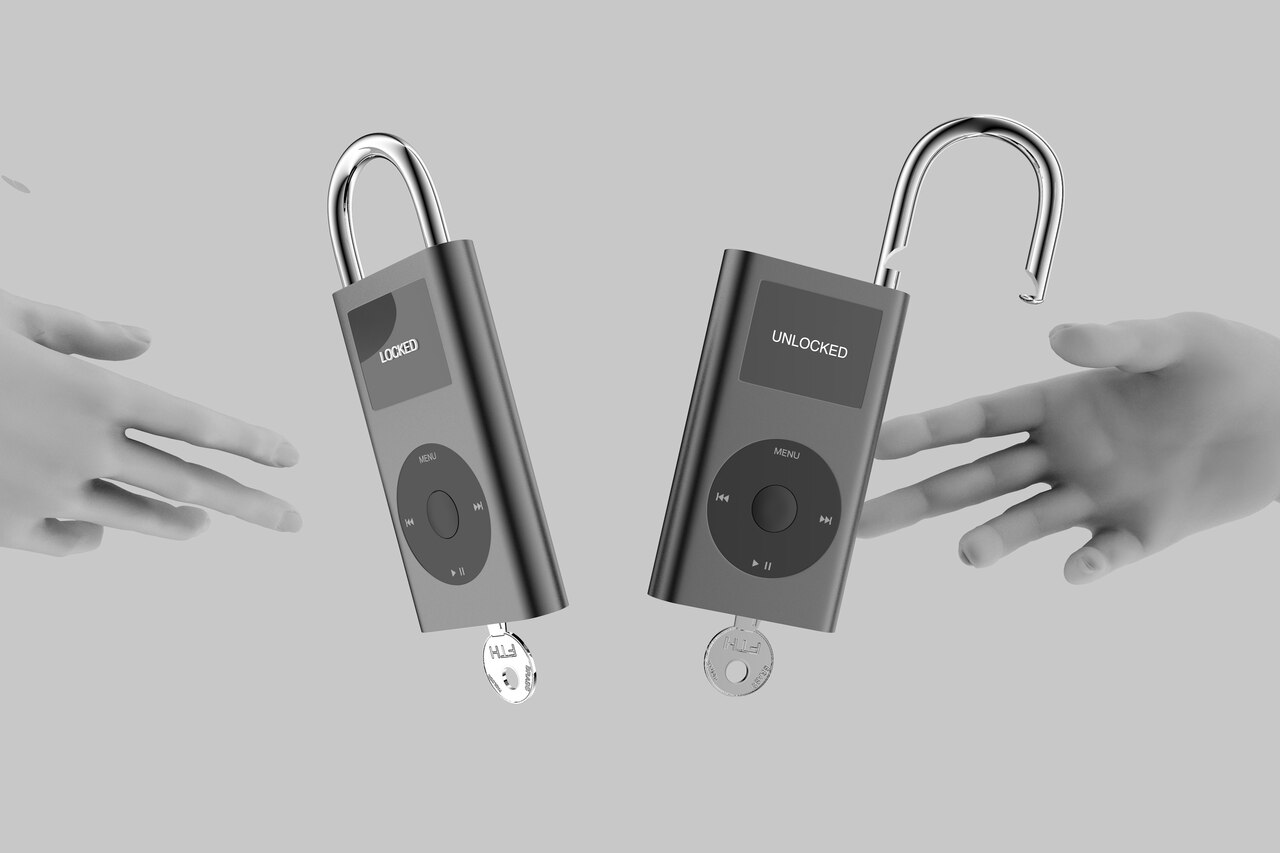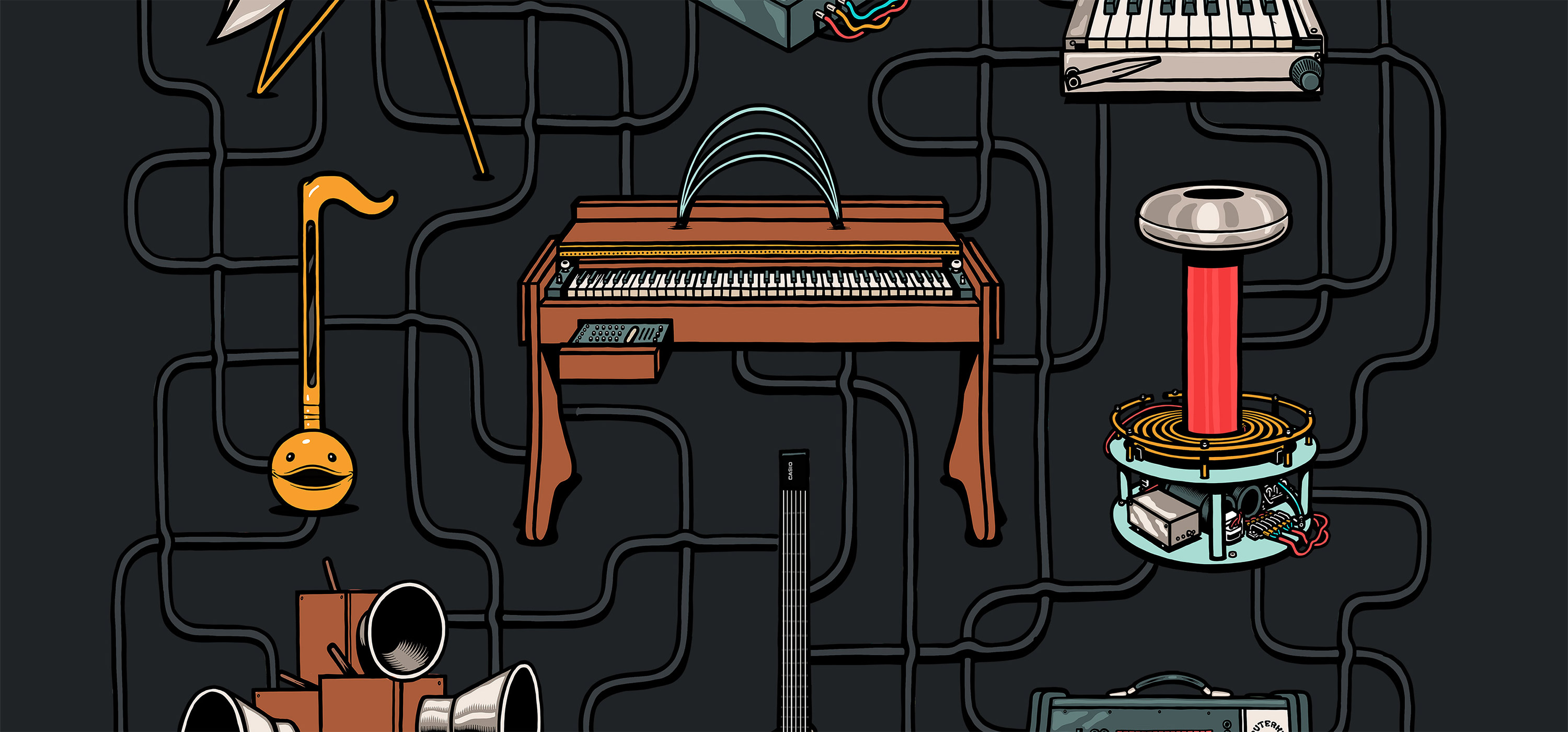
Failed Futures of Music
The future of music doesn’t always turn out the way people planned
In 1969, Jim Morrison of the Doors famously predicted the advent of electronic music, telling Rolling Stone that “I can see a lone artist with a lot of tapes and electrical… like an extension of the Moog synthesizer – a keyboard with the complexity and richness of a whole orchestra, y’know? There’s somebody out there, working in a basement, just inventing a whole new musical form.”
Mr. Mojo Rising was almost clairvoyant in his accuracy. Electronic pioneers Kraftwerk released their eponymous debut album the following year, and within a decade such machine-made music was pumping through speakers in nightclubs and warehouses across the United States, Europe and beyond. Digitally rendered music is now so ubiquitous that it has bled into every genre and fundamentally altered the way popular music is produced and enjoyed.
But for every correct music-related prediction from the past, there have been just as many forecasts that have been wildly, even laughably, inaccurate. In fact, some of the technologies now foundational to the way we make and listen to music were once forecasted as being completely useless. While hindsight is of course 20/20, exploring old predictions about the future of music and technology demonstrate the dizzying advancements of the past century and beyond.
Here, we explore some of the most significant of these failed predictions.
The British Have No Use For the Telephone
British inventor Sir William Preece revealed himself as a bit of a Luddite when he declared that the emerging telephone technology of the late 19th century would not achieve ubiquity in the UK. “I think not,” Preece responded when asked, during Select Committee hearings on lighting and electricity, if the telephone would become as popular in his native country as it had in the US.
“I fancy that the descriptions we get of its use in America are a little exaggerated,” he continued, “but there are conditions in America which necessitate the use of instruments of this kind more there than here. Here we have a superabundance of messengers, errand boys and things of that kind.”
Telephones soon proved themselves faster and more efficient than the standard-issue errand boy not just in the UK, but around the world. Less than a century later, in 1973, the technology evolved further than Preece likely could have imagined when Motorola unveiled the world’s first cellphone. The first iPhone came more than three decades after, and with its vast functionality transformed the phone from simply a talking device to the tool we use to access food, information, connection, transportation and, of course, music, via streaming platforms and MP3s. Some scenes, such as Durban’s gqom, even use mobile phones as a method of music distribution. Let’s see an errand boy try that.
Radio Waves Will Be Useless
The German physicist who proved the existence of electromagnetic waves was a scientific genius, if not quite a technological visionary. “The radio waves that I discovered are of no use whatsoever,” Heinrich Hertz declared in 1887. (“Nothing, I guess,” he continued when asked about the potential applications of his discovery.) And yet within a decade of Hertz proving the existence of airborne electromagnetic waves, other researchers had taken hold of the science and applied it to what were then referred to as “wireless telegraphy radio communication systems.”
In short, Hertz had invented radio, the technological foundation from which television then evolved. Without these electromagnetic waves, we would also not have the transmission medium used by wireless devices like cellphones and computers. Essentially, Hertz changed everything. Unfortunately, he also died in 1894 at age 36, before he could see – and hear – the widespread application of his “useless” technology. Still, Hertz is not forgotten – the “hertz” unit of measurement was named in his honor, as was a crater on the far side of the moon.
Concerts Will Be Performed Long Distance
The December 1900 issue of Ladies Home Journal featured an ambitious list of predictions for the year 2000. The author was John Elfreth Watkins, Jr., a venerable museum curator specializing in transportation and technology who worked with the Smithsonian Institute. While he astutely forecasted digital photography (“If there be a battle in China a hundred years hence snapshots of its most striking events will be published in the newspapers an hour later”), and fast food (“Ready-cooked meals will be bought from establishments similar to our bakeries of today”), Watkins was less accurate in the realm of live entertainment.
“Great musicians gathered in one enclosure in New York will, by manipulating electric keys, produce at the same time music from instruments arranged in theatres or halls in San Francisco or New Orleans,” he wrote. “Thus will great bands and orchestras give long-distance concerts.” Such long distance performances do not yet exist, which may be for the best. Watching a collection of freestanding instruments play themselves would not likely be terribly compelling for paying audiences.
American Music Will Deteriorate
Having composed military marches including “Semper Fidelis” and “The Stars and Stripes Forever,” (which admittedly bangs), John Philip Sousa was known as “the American march king.” It was arguably his predilection for this highly particular musical style that led Sousa to predict “a marked deterioration in American music and musical taste, an interruption in the musical development of the country, and a host of other injuries to music in its artistic manifestations, by virtue – or rather by vice – of the multiplication of the various music-reproducing machines.”
While Sousa was correct about the eventual ubiquity of music-reproducing machines and formats like the gramophone, CD and iPod, his assertion that they would deteriorate American musical output and taste was hopelessly wrong. Musical quality certainly hasn’t suffered with any of these innovations and in fact has arguably gotten more complex and interesting since the days when military marches ruled the scene. Sousa’s lament is more or less the same one many older people of certain eras make about genres and music technologies popular with “the kids.” (In short, that these styles are less refined than those beloved by previous generations.) The same would eventually be said of rock, grunge, hip-hop, electronic music and more. While this decline no doubt felt true for “the march king,” his forecast was highly subjective, and ultimately incorrect.

Radio Has No Commercial Value
“The wireless music box has no imaginable commercial value,” once mused a colleague of radio pioneer David Sarnoff. “Who would pay for a message sent to no one in particular?”
The answer would turn out to be millions and millions of people, every day, all around the world. This statement came in response to Sarnoff’s call for the widespread investment in radio technology and infrastructure. While his colleagues didn’t quite get the vision, Sarnoff laughed all the way to the bank and the boardroom, becoming the president of the Radio Corporation of America (RCA) in 1929 and serving in a leadership capacity until his death in 1971, at the age of 80. While many saw radio as a method only of “point to point” communication, Sarnoff recognized the potential in the “point to mass” format, with radio-based mass communication becoming, and remaining, ubiquitous.
In-Home Light Concerts Will Be Standard

Invented in 1938, the Clavilux Light Organ was a keyed instrument that produced light rather than sound. Named for a Latin word meaning “light played by key,” the Clavilux beamed amorphous light projections through lenses and tinted screens. The visuals were akin to those seen in modern screensavers, appearing as shape-shifting multicolored light clouds. In 1938, the inventor of the Clavilux, Thomas Wilfred, predicted that, “a few years will place ‘light concerts’ beside symphony concerts, the opera and the movies. And every home will have a color organ, as every home now has a piano or a phonograph.”
Wilfred performed his light symphony “Lumia Suite, Op. 158” at the Museum of Modern Art in 1964, but the mass proliferation of the Danish inventor’s light organ technology did not come to be. (Although the hypnotic beauty of the projections makes one wish it had.) The light shows Wilfred predicted have, however, become major components of many live music events. While most of his organs have been lost to history, Wilfred’s contribution has not been forgotten. A 1971 exhibition at the MoMA called him “the first artist in this century to use light as a means for expression rather than for the illumination of real objects from nature.”
The World Will Have Five Computers

To be fair, when IBM Chairman Thomas Watson stated, “I think there is a world market for maybe five computers,” the technology he was referring to was a monumentally expensive adding machine that filled a large room. While one might expect the head of a technology company to have more foresight about the possible applications of computer technology, in 1943 IBM was still largely dealing in military weaponry to support the war effort. When World War II ended, however, IBM expanded its digital computer research, eventually becoming a worldwide leader in the field.
Still, perhaps no one of Watson’s era could have predicted that computers would become so ubiquitous that a significant percentage of future humans would own one and also carry around one small enough to fit in their pockets and purses.
Radio Broadcasting Will Disappear
Poor radio! Since its inception, trend forecasters and technologists have predicted both its uselessness and its demise. In 1950, the Associated Press published a list of predictions for the year “2000 A.D.” Some, like population growth and longer lifespans, were dead-on. Others, not so much. Among the incorrect predictions were “the first man-made planet circling around earth,” six foot tall women of “perfect proportion” and the demise of radio.
“Radio broadcasting will have disappeared,” the article confidently declares, “for no one will tune into a program that cannot be seen. Radio will have long since reverted to a strictly communications medium, using devices now unheard of and unthought of.” While such devices were certainly on their way in the form of computers, cellphones and more, visual media has not yet eradicated the use of and demand for radio, however invisible it may remain.
Modern Art Will Only Be Useful to Psychiatrists
Renowned science fiction writer Robert Heinlein penned a list of predictions for a 1952 issue of Galaxy magazine. Among them, he wrote, “The cult of the phony in art will disappear. So-called ‘modern art’ will be discussed only by psychiatrists.”
While the definitions of “phony” and “modern” are certainly nebulous, it’s fair to say that Heinlin’s prediction was far off-base given that technology has opened the floodgates for the creation of and access to art. Discussing art is now as easy as making a comment on Instagram, while social media has also made it possible for anyone with internet access to establish a highly curated, and some might argue false, self-image. Heinlin’s assertion that “Your personal telephone will be small enough to carry in your handbag” was, however, on the money. The connection he failed to foresee is that it would be these tiny telephones that would assist in both the making of modern art as well as the cultivation of much phoniness.
Rock & Roll Will Die

In 1955, the most popular song in the United States was “Rock Around The Clock” a swinging dancefloor hit by Bill Haley & His Comets. (Haley is credited with being among the first musicians to bring rock to white audiences.) While previous versions of the song had been released, it was Haley’s rendition that blazed up the charts, with “Rock Around The Clock” sitting in the #1 position on Billboard for two months. The song established the mainstream popularity of the nascent rock & roll genre that was at the time also being carved out by artists like Chuck Berry, Elvis, Buddy Holly and Little Richard.
And yet, Variety magazine claimed the genre would “be gone by July,” a shortsighted assertion that dismissed one of the most enduring and foundational forms of music as simply a passing fad. While the rock & roll of the era certainly wasn’t the representative of all the permutations of rock – grunge, heavy metal, hair metal, etc… – that would emerge in the future, it was the foundation for such development. In fact, the more accurate prediction would come in 1958 in a doo-wop/rock hit by Danny & The Juniors, who exuberantly proclaimed that “rock and roll is here to stay, it will never die.”
The Beatles Will Never Be Big
This prediction is so famous, and so absurdly incorrect, that it has become part of pop culture mythology. “We don’t like their sound, and guitar music is on the way out,” Decca Records’ A&R Dick Rowe allegedly told the Fab Four’s manager Brian Epstein in 1962. In fact, the real story is a bit more complicated.
According to British author Mark Lewisohn, the author of a book series on the Beatles, it was actually Epstein and the band that rejected Decca, as the record company wanted the group to pay the expenses related to printing their records. John, Paul, George and Ringo were not amenable. The story continues that the Beatles had auditioned for Decca, but were not in their finest form during that performance. The label subsequently signed a different act, while the Beatles went on to become one of the most important and influential bands of all time, with guitar music becoming as beloved as Sgt. Pepper.
The 8-Track Will Endure
“The 8-track revolution is just beginning,” an extensive advertorial section in Billboard proclaimed in 1970. Popularized in the mid-’60s, 8-track tapes existed in a brief window between vinyl records and cassettes. The 8-track’s popularity boom was a function of 8-track players being offered as an optional installation in most Ford vehicles starting in 1967. Home 8-track players were introduced in the same era, and for a time the technology was one of the most popular ways to listen to music, although 8-tracks were widely used in only a handful of countries.
While Billboard claimed 8-tracks would remain popular due to their ease of use, high-quality sound and prevalence in the auto industry, the 8-track revolution would not last. By 1970, the oversized tapes were already on the decline, with cassettes – smaller and easier to transport – surging in popularity.
The Future Will Come Faster
Sound design pioneer Suzanne Ciani and her network of electronic producers and modular synth developers anticipated that the technology they were developing in the ’70s would quickly take over fundamental aspects of daily life. “In my day I thought we would be where we are now, 30 years ago,” Ciani told The Guardian in 2017. “I thought electronic music would be everyplace, built into furniture! I designed a sofa where eight people could sit in a circle and everybody could adjust their pitch.”
While Ciani’s visions for the future even now remain, well, futuristic feeling, electronic music has of course become vastly more integrated into mainstream culture in the past four decades, with products like the wearable audio system SubPac available on the consumer market. We’re still waiting on those pitch-shifting couches, though.

Disco Will Be Demolished
On July 12, 1979, a crate filled with thousands of disco albums was placed on the outfield of Chicago’s Comiskey Park, and then blown up. Upon the detonation, the crowd rushed the field, causing so much damage to the grass that the Chicago White Sox and Detroit Tigers couldn’t play the second game of the night’s doubleheader.
The event would go down in history as “Disco Demolition Night,” a reaction to the popularity of the slick dancefloor genre that was spearheaded by Chicago rock DJ Steve Dahl. “Disco sucks!” the crowd had chanted before the explosion. Admission to the game was 98 cents for anyone who also brought a disco album to destroy.
The intention was to kill disco in order to make room for guitar music’s resurgence on the charts and in pop culture, but it didn’t really work out that way. While the disco craze of the mid and late ’70s did wane, the genre remains a vital and much-beloved component of the worldwide dance community. Meanwhile, Disco Demolition Night is now considered a racist and homophobic cultural misstep in consideration of disco’s deep ties to the gay community and to the people of color that helped establish and popularize the sound.
The 808 Will Never Take Off
When launched in 1980, the Roland TR-808 drum machine was a commercial failure. Only 12,000 or so units sold, with the drum sounds emanating from the machine considered less refined and realistic than those of pricier units. (The 808 used analog synthesis to create sound, while other machines incorporated samples of actual drums.) Manufacturing of the TR-808 was halted after just three years, a result of both poor sales and the discontinuation of the transistors that were a core component of the machine.
Seems incredible now, right? While the 808 did, essentially, fail, it wasn’t long after its discontinuation that the unit was picked up by hip-hop artists, most famously Afrika Bambaataa & the Soulsonic Force, whose use of the 808 in “Planet Rock” signalled a sea change in the genre. (“‘Planet Rock’ didn’t so much put the 808 on the map as it reoriented an entire world of post-disco dance music around it,” proclaimed a 2015 Slate article about the machine.) The instrument is now so legendary that a feature-length documentary was made about it, not to mention Kanye West also naming 2008’s 808s & Heartbreak after the unit.
The CD Will Sustain

“Considering its quality and size, the compact disc will most certainly become part of our everyday lives in the future,” a Detroit news station announced in a 1985 segment regarding the emerging compact disc. In fact, the report was entirely correct. The CD would soon become the standard format for consumers to get music, with early adopters raving about its clean, high fidelity sound. Made in Germany, the first commercially manufactured CD was ABBA’s 1981 album, The Visitors.
But CDs were not to last. By the turn of the century, the rise of MP3s, file-sharing platforms like Napster and Limewire, along with iPods, streaming and other disruptive digital music technology made the CD all but obsolete while also dramatically changing the way people consume and listen to music, causing a major crisis within the industry.
Futura Rock Will Be a Thing
In 1988, the Los Angeles Times looked 30 years to the future in a special edition magazine that predicted what life might be like in the city in 2013. Reporters predicted that downtown LA would be surrounded by an elevated public transportation system and would boast a skyline with two earthquake-proof towers. 25 years later, viable public transportation in Los Angeles remains a future fantasy, while the skyline is populated by dozens of high-rises shouldering each other for space as they extend upwards.
Another false prediction was “futura rock,” which the Times stated would be the genre of choice among hip young people. While any genre with “futura” in the title seems inherently doomed to become a passé (hello, future house), much like those elevated trains “futura rock” never even got off the ground.
Acid House Will Fade
A product of the sound made by the Roland TB-303 electronic synthesizer, acid house become a sensation in its native Chicago before jumping across the Atlantic to dominate raves throughout the UK and Europe. But while club kids happily bounced along to the squelchy acid beats, not everyone was a fan of the freaky, futuristic genre.
“It’s the closest thing to mass organised zombie-dom,” BBC Radio 1 DJ Peter Powell said of acid house. “I really don’t think it should go any further.” Powell’s critique was one thrown at many styles of electronic music as the genre drew kids to all-night parties in fields and warehouses in the ’80s and ’90s, and in doing so filled older generations with existential anxiety about the fate of the youth. While the traditionalist Powell might not have played acid house in his own shows, he couldn’t stop the genre from becoming one of the most beloved niches of the electronic world.
Customized Listening Experiences Will Replace Music

In 1995, digital wizard Brian Eno gave a sprawling interview to Wired in which he touched on shifts in cultural consciousness, the Renaissance, the rhythmic shortcomings of technology – “Do you know what I hate about computers? The problem with computers is that there is not enough Africa in them. This is why I can’t use them for very long. Do you know what a nerd is? A nerd is a human being without enough Africa in him or her,” he said – and much more.
While Eno demonstrates the intellectual profundity one might expect from one of modern music’s most innovative and enduring figures, one assertion he didn’t get quite right had to do with musical formats of the future. “What people are going to be selling more of in the future is not pieces of music, but systems by which people can customize listening experiences for themselves,” Eno conjectured. While you can argue that this is true given electronic music’s ubiquitous use of sampling and DAWs, along with playlist culture as a systematic customization form, the open format technology Eno seemed to be predicting has not yet trickled down to the average consumer, who still largely receives, listens to (and pays for) songs in their finished form.
Copyright Law Will Cease to Exist
The dearly departed Thin White Duke made some extremely astute observations about the future of music in a 2002 New York Times profile. In the piece, David Bowie stated that he couldn’t see the point of being on a label within a few years, given the incredible transformation of music distribution to more DIY models, and also predicted that within a decade music would become a free-flowing utility like water and electricity. While the impending streaming revolution demonstrated Bowie’s prescience, one topic on which he wasn’t quite correct was copyright law.
“I’m fully confident that copyright, for instance, will no longer exist in ten years, and authorship and intellectual property is in for such a bashing,” Bowie told the Times. While the ways we consume music have been dramatically altered, copyright remains intact and (fairly) responsive to industry changes. In April 2018, the US House of Representatives voted in favor of the Music Modernization Act, which would update licensing and royalties as they relate to streaming. The MMA was introduced alongside legislation ensuring songwriters and artists receive royalties on songs made before 1972 and the Allocation For Music Producers Act. The bill has no serious opposition in the Senate and is expected to pass into law during an upcoming vote. In a statement, ASCAP CEO Elizabeth Matthews said “This legislation is critical to ensuring songwriters have a pathway to fair compensation so they can sustain their livelihoods and create the next great songs.”
People Will Want to Own Their Own Music
Steve Jobs is a prolifically influential figure who essentially changed the nature of human communication. One technological nuance he was incorrect about, however, is the way people prefer to get their music. In a 2007 interview with Reuters, Jobs stated that “people want to own their music,” a viewpoint it can be assumed was held by anyone with a vested interest in the iTunes store.
Still, Jobs was wrong, as streaming has become the dominant method for people to access music. Reuters was in fact more correct, stating that “many in the music industry hope iTunes will ultimately start, in effect, renting music online, so record companies can make more money from recurring income.” Spotify launched the following year and Apple Music, the company’s paid streaming service, now has more than 40 million subscribers.

Auto-Tune Will Die
In 2009 it was trendy to hate Auto-Tune, the vocal manipulation software that allowed singers and producers to optimize vocal performances in real time. Auto-Tune was considered a spiritual crisis within the industry, as purists feared it would ruin the soul of music itself by allowing anyone to fake a good vocal take while stripping the human essence from recorded and live performances.
While Christina Aguilera was spotted in an “Auto-Tune Is For Pussies” t-shirt and members of Death Cab for Cutie wore blue pins to the 2009 Grammys to signify their opposition to the technology, no one clapped back harder than Jay Z, who recorded an entire song about the imminent demise of the software. It was “D.O.A (Death of Auto-Tune),” which found Jay rhyming “Get back to rap, you T-Paining too much” in reference to the career-defining use of the software by the top hat-wearing R&B artist. It didn’t matter. Auto-Tune is now everywhere, with its creator Andy Hildebrand noting that the way in which it rapidly sped up production time meant that when one studio had it, they all had to have it.
“Auto-Tune’s not just some effect – it’s an integral part of his emotion and his sound and his delivery,” said Seth Firkins, the late Atlanta-based producer who used Auto-Tune to define the output of his long-time collaborator Future. As the software is now standard in the vocal production toolkit, it is really only the backlash against Auto-Tune that has died.
Rap Will Fail
Gene Simmons of KISS sounded like a standard cranky old man shaking his cane from a porch when, in 2016, he told Rolling Stone that, “Rap will die. Next year, ten years from now, at some point, and then something else will come along.” Genre popularity certainly ebbs and flows with passing eras, but with hip-hop firmly established as a foundational and distinctly American genre that’s currently one of the most commercially and critically successful forms of popular music, it’s unlikely rap has anything to worry about. Don’t tell that to Simmons, though. The 68-year-old continued his rant, saying he’s “looking forward to music coming back to lyrics and melody, instead of just talking.”
Header image © Plus Mûrs Studio

